One Brand. Many Channels. One Consistent Visual Language. One Unified Experience.

You’re in a busy market. People rush past. Hawkers shout for attention. Amid the chaos, something catches your eye—not a face, but a familiar hairstyle, jacket, or walk. You recognize them instantly.
That’s visual consistency.
Brands need the same kind of recognition. Whether it’s your website, social media, packaging, in-store signage, app, or emails—your brand should be unmistakable, even in a crowded digital space.
This is where visual brand consistency becomes essential—it helps your audience instantly recognize and trust your brand, no matter where they encounter it.
It’s not just a creative choice. It’s a strategic decision—a tactic to connect with your audience at every touchpoint where they see, interact with, and experience your brand.
If your look changes across channels, you dilute familiarity. You create fragmented versions of your brand that compete with each other.
Visual consistency builds recognition and strengthens your brand image. It gives you one coherent identity customers can spot at a glance.
Your multi-channel branding need
A Salesforce study says that 72% of customers engage with brands on several channels. eBay Advertising UK’s research highlights a shopper’s interaction with a brand through six touchpoints and the importance of a seamless and consistent experience on all these channels.
What do these statistics show?
The importance of multi-channel branding. Your brand can’t stay in one place—it must travel to meet customers at different touchpoints. Think of it like a book: each chapter is a new station where your brand stops to engage.
Now, if you change your tone, messaging, fonts, voice, layouts, graphic elements, or logo on every channel, the audience is lost.
But if you maintain visual consistency, they recognize and engage with you. This is how you can converse with them and build familiarity and comfort, which, ultimately, leads to trust.
This blog emphasizes the significance of such visual consistency in building trust and increasing conversion. We also explore the common inconsistencies and essential elements of a visual brand identity system that brand managers and design teams must know to reap the benefits of visual brand consistency.
What happens when you maintain visual brand consistency
Where is your brand present?
- Websites
- Social media platforms
- Mobile apps
- Newsletters
- Stores
- Events
- Outdoor displays
- Print materials
This multi-channel presence helps you reach customers at every touchpoint—and reinforce your brand message.
Why visual consistency matters across these channels:
- It builds a mental “memory map” of your brand—your colors, fonts, and logo become instantly recognizable.
- Recognition turns into recollection, helping customers remember your message and build deeper connections.
The benefits of multi-channel visual consistency:
- Customers recognize, remember, and distinguish your brand from competitors.
- Consistency in visuals signals consistency in product or service quality—building trust.
- A clear, unified look helps customers understand your value and why they should care.
- It eliminates confusion and boosts confidence in buying decisions.
- Ultimately, it nudges customers to choose you over competitors.
Don’t underestimate this. Without consistency, your brand creates noise—not harmony.
Problem: Visual inconsistencies that weaken your brand
Just like inconsistent workouts lead to poor fitness, inconsistent brand visuals weaken your identity. Here’s where brands often stumble:
1. Logo misuse
- Using distorted or varied logo versions across platforms causes confusion.
- When your identity shifts from place to place, customers question your reliability.
2. Mismatched fonts and colors
- Imagine a playful neon-colored Instagram feed, a serious black-and-white brochure, and a minimal, colorless website.
- The result? A fragmented identity. No single version feels like “you,” and customers can’t recall your brand.
3. Inconsistent layouts across web, social, and print
- Your platforms should speak the same visual language.
- When layouts and tone clash, your message gets diluted. Engagement drops. Trust erodes.
In short: inconsistent visuals = confused customers = lost conversions.
Solution: Creating a bulletproof visual identity system
The inconsistencies are due to siloed efforts. Consider the visual consistency across different channels and elements as a single system. When you connect them, you create a seamless brand experience for customers.
It is like a jazz band. Different instruments follow the same rhythm to connect and create soulful music.
Your brand’s visual identity system should include these essential elements:
A robust brand style guide
No—it’s anything but boring.
It is an essential piece of paper or two to guide you on using all visual elements that help you communicate with your target audience. The guide must include points on visual, textual, and verbal elements (logo, colors, fonts, voice, images, etc.) and their application (like templates). It helps maintain brand consistency across different channels, facilitating higher brand recognition and recall.
Templates and centralized assets
A great way to have a visual identity system is the use of templates, centralized assets, and design tokens across all channels. Digital Asset Management (DAM) tools guarantee the same DNA in all your visual elements, be it slide decks, social graphics, or videos.
Cross-channel integration
Your branding channels do not work in silos. You must link them for a better impact on the audience. Manage cross-channel integration and cross-department collaboration to effect this. Your Instagram carousel must lead to your website, your newsletter must link to your blog, and your packaging must have the website link.
How does it help?
The audience grows from passive viewers to active participants. They act. They take a step towards your brand.
Storage, version control, and accessibility rules for design elements
Beyond defining layouts and design elements, it’s crucial to set guidelines for storage, accessibility, and version control. A centralized repository ensures everyone can access assets when needed, while designated team members manage updates and versions efficiently.
Real Brand Example: Aramid Technologies
Who?
A digital transformation expert in the supply chain industry, Aramid Technologies sought a strong brand identity and market positioning. Their goal was to clearly communicate their value proposition and growth potential to attract both investors and customers.
What did we do?

829 DESIGN met these goals with a tailored brand strategy, including:
We developed Aramid’s inaugural website—an entirely new digital presence that positioned the brand as a revolutionary change-maker in supply chain management. (Note: The current version of their website is not our work and looks significantly different.)
Our work included:
- A website built around compelling storytelling and intuitive user interface design.
- Meticulous, engaging visual design elements to spark investor interest and resonate with target audiences.
- An extended color palette that added depth and sophistication to the brand’s primary colors.
- Cohesive, immersive brand experiences across advertising platforms to establish a strong, consistent foundation.
Result?
The unified visual identity and its consistent execution across channels gave Aramid meaningful momentum in the market. The company went on to secure USD 2 million in seed funding, saw a notable increase in brand engagement, and improved conversion rates.
Are you ready for your visual identity markers?
Visual consistency is how your audience sees you, remembers you, and trusts you. Your brand elements—logo, colors, tone—remind customers of your story and promise.
Building this consistency isn’t easy. You may face:
- Unclear brand guidelines
- Legal or compliance constraints
- Fragmented visual efforts across teams and platforms
But overcoming these challenges pays off. You’ll earn trust, communicate clearly, and create a recognizable identity across the entire customer journey.
Think of your customer’s path: they discover your brand on Instagram, research you on your website, buy through your app, and revisit you through emails or packaging.
Stay consistent across these channels, and you’ll turn scattered touchpoints into a seamless journey—and first-time buyers into loyal advocates.
Ready to go from visual confusion to brand cohesion?
Connect with us and bring your brand’s vibe back into focus
The Loyalty Link: Why Brand Strategy is the Secret to Retention in 2025

Has your business hit the wall? Done everything, but still no change in results? The product/service is top-quality, but still, customers never return?
Stop where you are. Shift your focus from the product/service to your brand experience. For this, you need to go back and rework your brand strategy.
A brand strategy defines the personality of a business. How it looks, sounds, writes, listens, and behaves. Even how you, as a business, make your customers feel falls under brand strategy. It can include your communication with the audience, their perception of you, and their final experience with your offering.
Speaking in Gen Z lingo, brand strategy is the vibe your business gives off to people around you. It can be professional, friendly, empathetic, cold, or just transactional. When people connect to this vibe, they become loyal to your business and return whenever they need your product/service.
Don’t you keep going back to people you vibe with? Keep visiting the same café whose ambiance and food attracts you? Keep watching the same travel YouTube channel because you like the information, photography, and the approach. The same is the case with brands.
To help you build this vibe, we explore how your brand strategy links with customer retention and loyalty. We discover the brand strategy essentials that can help you retain customers and make them your loyal fans.
Brand strategy converts one-time buyers into loyal fans
Brand strategy is like a personality. If you like a person’s way of speaking, dressing, communicating, and behaving, you stay in contact with them. In the same way, if you like a brand’s personality, you stay in contact with them by becoming a brand fan and loyal customer.
But the brand needs to make an effort to make itself likeable. This is possible with:
- Familiarity and consistency in all messaging and customer communications
- Stand for the values, commitments, and assurances that are promised to deliver
- Unforgettable experiences customers expect at all possible customer touchpoints
These brand experiences make customers feel seen, heard, understood, and appreciated. It leads to developing your brand identity and market positioning, based on which customers trust you and become your loyal customers.
Do you know 28% of customers become brand loyals after consistent branding across all channels (SAP Emarsys’ research)? Moreover, 88% of customers return to a trusted brand. (Deloitte research).
Brand strategy enhancements bring customers back for repeat purchases
Customers do not like it when brands do not pay attention to them, address their pain points, give timely updates, provide seasonal benefits or discounts, etc. And what do they do? They churn and shift to another brand. Customers come back if you keep providing consistent, positive experiences and engagement across all touchpoints.
Your brand strategy needs to do the WORK here to bring back customers – how, which ones, when – it all depends on you.
It must be like a gardening plan. You know when to water, how much to water, what to plant, how to grow, which season to grow which crop, etc.
Your brand strategy must:
- Be clear about its uniqueness, offerings, and value delivery
- Align with the values of the target audience
- Stay consistent in voice, looks, behavior, and messaging across all channels
- Deliver exceptional experiences to solve customer problems
- Be personalized to make customers feel valued and more than transactional data points
Just as we gravitate toward people who understand us, we return to brands that reflect our values and preferences.
Proper nurturing with loyalty programs, value-driven products/services, community engagement, and personalized experiences improves customer retention.
Wish for customer loyalty and retention?
Focus on these aspects
How does the dating scene play for a person? You make an exceptional first impression, then talk and listen to build a connection. You go the extra mile to keep the relationship exciting. But before all this, you determine your desired feature list and make your identity and values attractive.
Brand strategy involves the same elements.
Ideal customer definition
You can’t please them all. Not everyone will use your product. So, focus only on your ideal customer. Define it clearly and make everyone in the team understand it. Niche down as far as you can. Then speak to them. The rest will follow.
A strong foundation
What is your brand standing on? It must have a clear purpose, a futuristic vision, a problem to solve, a mission, and a few values it won’t compromise. This is your foundation, which you must be confident about and communicate well to others.
Visual and verbal identity
Here comes the first impression, which involves your logo, website, packaging, designs, graphics, and tone of voice. Attract your customers with these, and voila, you’ve made the first confident move.
Customer-centric messaging
Your customers are attracted, but you need to communicate with them. Tell them about yourself, listen to their stories, and share your lives. Your taglines, marketing campaigns, storytelling, social media content, and designs make this possible. Value them, appreciate them; they will do the same by showing their loyalty.
Emotional connection building
Emotional bond takes time and needs nurturing. Keep on your promises and improve customer experiences. Share some real-life stories of founders, brand stories, and vulnerable situations. Your consistent efforts can help build a place in their heart.
Brand Positioning
Consistency builds reliability. If you confuse customers, they alienate themselves. So, keep your messaging consistent across all channels to build a positive, strong, and unique brand image in their minds. Customers develop brand affinity and make repeat purchases if you are consistent and clear.
Additional customer delights
Special people need special attention. Invest in customer delight if you want loyal customers and you see that element in them. Loyalty programs, interesting packaging, and exceptional experiences – all are necessary to keep the relationship alive and exciting.
A brand strategy case study with a positive impact on loyalty and retention
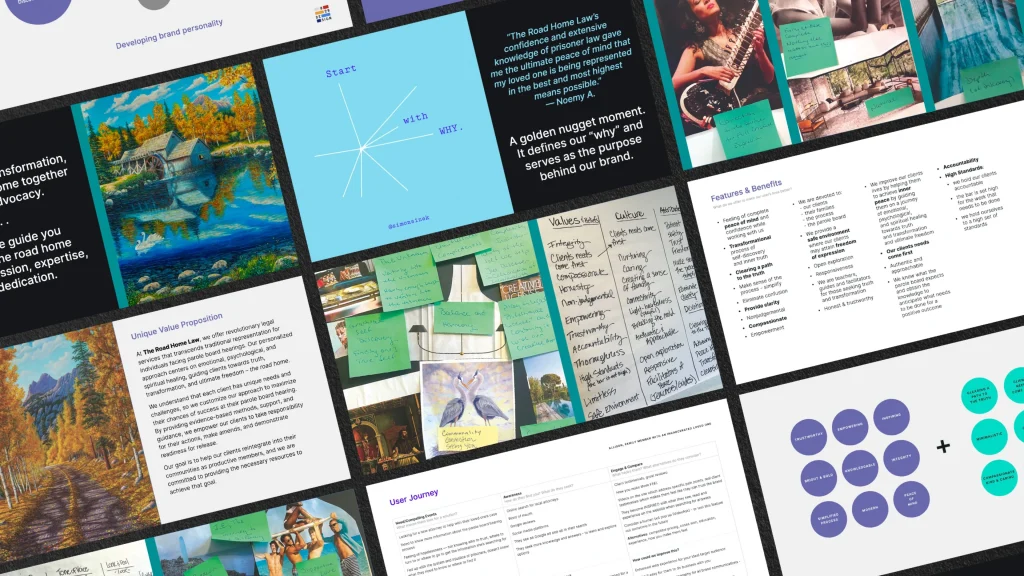
829 DESIGN’s complete brand build for The Road Home Law
The Road Home Law is a non-traditional law firm with expertise in post-conviction legal services. They wanted a unique brand identity unlike any other legal firm. They wanted their customers to trust them, consider them as a friend, and approach them with legal problems. When The Road Home Law approached us, they were starting from ground zero—no logo, no visuals, no identity, no brand.
That’s where 829 DESIGN stepped in.
We created a complete brand strategy to show what the Road Home Law is, what its world is, and what it does. Based on an understanding of their why, who, and how, our strategy blueprint included defining the:
- Defining their mission, vision, and values
- Crafting a unique value proposition
- Clarifying their brand purpose, identity, and positioning
- Creating detailed target audience personas
Once the strategy was placed, we moved into the specifics. We created Stylescapes to give an idea of the brand’s tone, mood, and aesthetics. Then we proceeded with fonts, colors, logo, typography, brand collateral to create a living space for the brand. Based on these factors, the brand’s digital home – a one-page website was built to reflect what they stand for and engage with the audience.
All these aspects of the brand reflect uniqueness, confidence, boldness, legal aesthetics, and transformative vision.
Now, clients are building trust with The Road Home Law because they emotionally connect with them. Clients get the much-needed hope for transformation, empathy, and an optimistic vibe from them.
This is how we build brilliant brands at 829 Design from nothing to unforgettable.
Brand strategy already in place?
Use these best practices to fine-tune
You know the deep connection between brand strategy and customer retention and loyalty. If you wish to level up, you can do the following:
- Find out the problem areas. How? Conduct regular brand audits.
- Make every interaction fruitful. How? Communicate your values, promise, and vision in all your customer messaging.
- Build on emotion. How? Personalize each customer experience.
- Make your messaging consistent. How? Align marketing, sales, and support teams on one single emotion.
- Listen to customers. How? Ask for their feedback and act on it.
- Humanize your customer relationships. How? Educate, empower, guide, and stay connected.
Let’s build your brand’s next chapter
Building customer loyalty and retention is not easy. It requires significant effort. Especially in terms of your brand strategy. You can focus on creating memorable customer experiences, a unique value proposition, and consistent brand messaging.
Customers remember you, build a connection with you, and are happy to deal with you. They return to you again and again for your value offering. This is how you score a goal to reach your business goals.
Don’t want your customers to leave you?
Give them more than just a product or service.
Share stories, build connections, and enhance experiences.
Let’s talk about crafting your brand strategy
Your Brand Is Giving You Hints: Notice Them Before It’s Too Late
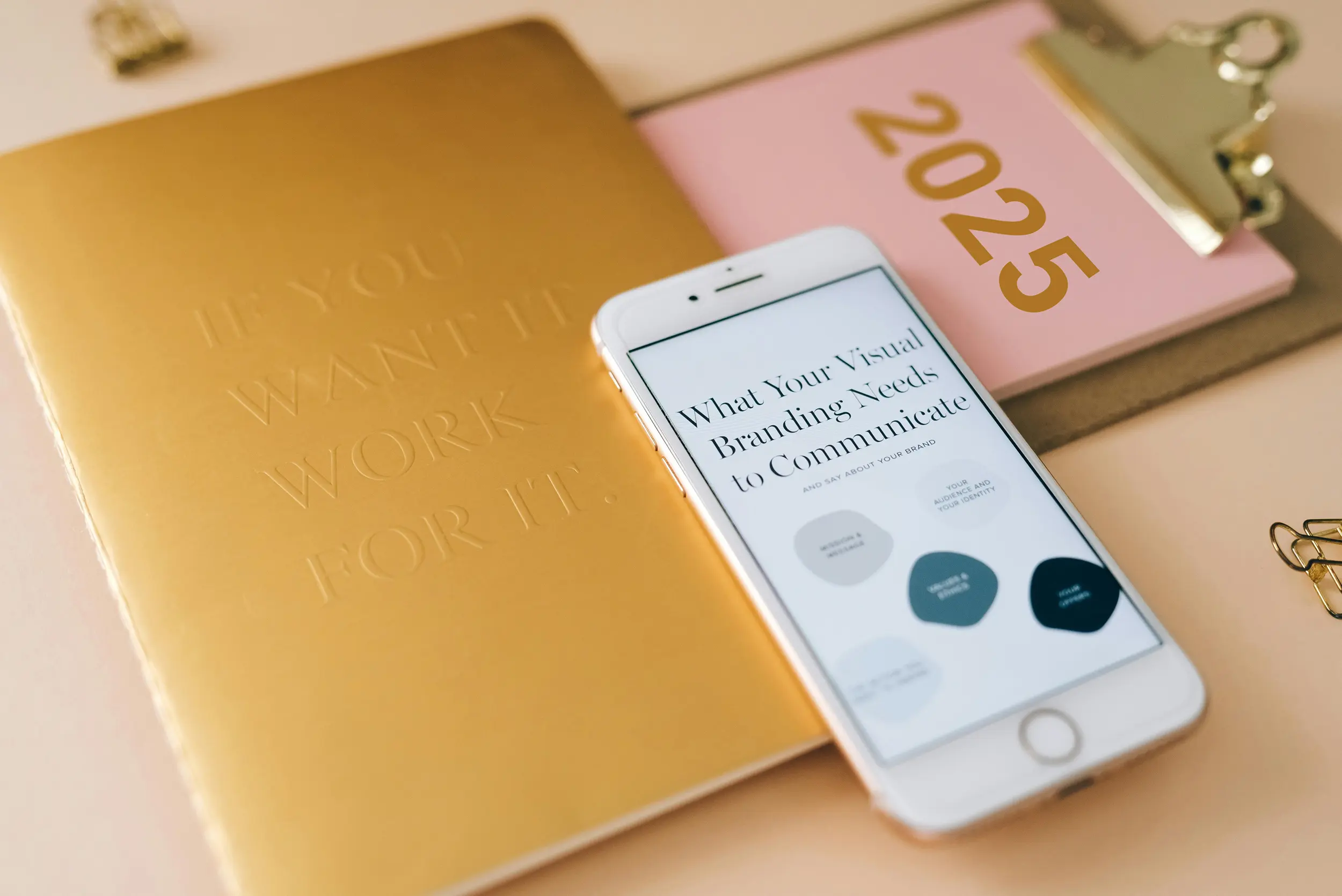
Ever notice a strange symptom and brush it off? Once, twice, maybe even three times? Then suddenly, you’re facing a serious health issue.
Brands work the same way.
Your brand whispers before it shouts. A dip in engagement. A sudden drop in website traffic. Customers forgetting your name. These are not random occurrences—they’re red flags.
Brand audits are your regular check-ups. They help you catch problems early before they spiral into lost market share, decreased ROI, or a full-blown identity crisis.
As customer preferences, competition, and market dynamics shift, a brand audit keeps you aware and responsive. It often leads to a brand refresh strategy—revitalizing your identity, improving relevance, and strengthening your market position.
If you’re a founder, marketer, CMO, or brand manager, you already know the drill. You know how important it is to detect these signals before they become blind spots. This guide walks you through the brand audit process so you can act before your brand loses traction—or worse, becomes forgettable.
Notice When Your Brand Speaks:
Why You Need to Listen
Imagine a brand, Retailer X, that started strong with impressive conversion rates. But then the decline starts. The team has gone all in and made efforts across all angles, but what’s the result? A drop in visitors, conversions, and social engagement.
Time for a reality check.
It’s likely not just a tactical issue. Either X no longer resonates with its audience, or it misunderstood what they wanted all along. A brand audit helps pinpoint the root cause—low retention, unclear messaging, weak emotional connection, quality lapses—whatever it may be.
At its core, a brand audit helps you evaluate your brand from multiple angles: insider, customer, competitor, investor, and the broader public. It uncovers:
- How the market has shifted and how you’ve responded (or haven’t).
- Strengths and weaknesses within your brand experience.
- Market opportunities and challenges that inform future strategy.
- Whether your current positioning still aligns with your long-term goals.
- Your audience’s evolving preferences and expectations.
Depending on what surfaces, this might mean refining your messaging or completely rethinking your target audience, positioning, or visual identity. It’s not always about drastic change—but it is about realignment.
In short, your brand audit is your alarm clock. The earlier you wake up, the better your chance to shift, sharpen, and survive.
Core Brand Signals You Must Hear
What does your brand look like (Visual Identity)
Your brand’s visual identity—its logo, colors, and design—tell a story at first glance. It speaks volumes—before anyone reads a word and includes:
- Logo
- Website design
- Social media assets
- Packaging
- Brochures & emailers
- Advertisements
- Merch and collateral
Do these elements feel cohesive across platforms? Are they aligned with your mission and personality—or do they feel disjointed or outdated? Do they tell a story or are they just random signs?
Even minor visual tweaks—a modernized logo, simplified color palette, or consistent imagery—can significantly boost brand recall and trust, improve engagement, and lead to better customer loyalty.
What does your brand sound like (Verbal Identity)
Your brand’s voice and tone shape how people relate to you. Does your messaging sound robotic or real? Warm or cold? Confident or confused?
You can identify this from the brand’s:
- Voice & tone
- Messaging across channels
- Taglines & slogans
- Language style
- Naming conventions
Consistency builds brand personality. Done well, it can drive emotional connection, loyalty, and authority in your space. So, make these elements consistent, warm and welcoming, real, clear, unique, and from the heart.
What people say about your brand (Customer Perception)
This is where the truth comes out. Ever wondered what your customers truly think about your brand? Key questions to answer:
- What do they like and dislike?
- Do they trust your brand?
- Would they repurchase?
- Are they satisfied with the experience and value?
- How do they feel engaging with you?
Use surveys, interviews, reviews, sentiment analysis, testimonials, and social media feedback. Your customers’ voices are your biggest brand clues.
How strong is your digital footprint?
Your online presence is the most visible part of your brand. Your digital footprint includes:
- Website UX and SEO
- Social media content and engagement
- Digital campaigns & ads
- Online reviews & reputation
- Newsletters, blogs, videos, and other content
- Trust badges, security seals, partnerships
Audit for:
- Visibility: Are you showing up in the right places?
- Consistency: Does your online identity match your brand strategy?
- Engagement: Are customers interacting meaningfully?
- Competitiveness: How do you stack up against others in your industry?
Your digital footprint is often the first and only impression someone gets—make sure it reflects who you really are.These touchpoints should leave a strong impression and help shape a positive brand image.
How to Conduct a Brand Audit That Works
Inspecting the visual and verbal identity, customer perceptions, and digital footprint is essential. A thorough audit starts with listening—to everyone. And, it all starts with research.
Talk to those who live and breathe your brand every day—Employees. Customers. Partners. Vendors. Leadership. Each offers a unique lens.
Ask everyone:
- What’s working?
- What’s not?
- Where can we improve?
- Where are we headed?
When you gather these perspectives, the real picture emerges—not just of how your brand is seen, but how it’s felt.
Then, examine your brand assets—your visuals, messaging, web presence, and more. Look for patterns.
Do they align or contradict each other?
Are they sending the signals you want to send?
Are they working or undercutting your goals?
Customer data and feedback is your goldmine
Aligning with your customers means knowing:
- What do they think about you?
- What do they want from you?
- What do they expect next?
Social comments, reviews, DMs, complaints, and survey feedback—these are not just noise. They’re directional signals. Answering these three questions gives you insight into how your customers perceive your brand. So, tap into feedback, reviews, social media comments, complaints, and anything your customer says about you.
Comparison isn’t just healthy—It’s necessary
Just like comparing notes with peers can spark new ideas, analyzing your competitors can reveal untapped opportunities for your brand.
Ask yourself:
- What are they doing better?
- What are they doing differently?
- What are they doing worse?
This kind of analysis helps you uncover:
- Missed opportunities you can seize
- Gaps in the market you can fill
- Ideas to differentiate your brand meaningfully
You don’t need to copy your competitors—but you do need to understand them. That understanding is what allows you to build a true competitive advantage.
Your Brand’s Growth is One Audit Away
Think of a brand audit as your annual wellness check—because your brand’s health deserves it. Talk to the people who matter: customers, employees, partners, and anyone impacted by your brand. Ask what’s working, what’s not, and what could be better. Listen carefully.
This isn’t just a checkbox exercise. It’s how you uncover what’s strong, what’s slipping, and what needs attention before it becomes a real issue.
Yes, there’s a lot to manage. But your credibility, customer trust, and market position are too important to leave to chance.
Take action before your brand goes quiet. Before it fades. Before the signals stop showing up.
Brand audit = pivot, polish, perform
A brand audit isn’t just a task—it’s a reset point. It gives you the insight to:
- Refocus your strategy
- Strengthen customer connections
- Rebuild or refresh your identity
- Adapt with confidence
More than anything, it proves that your brand is listening, evolving, and staying relevant in a constantly shifting market.
Don’t wait for your brand to get lost in the noise.
We’ll help you listen, adapt, and lead.
Start your custom brand audit today.
Swag Strategy:
Why Branded Merch is Your Marketing MVP

Does your brand have swag?
Today, we’re going to discuss how custom branded merchandise can elevate your brand. Whether you’re a startup carving out your niche or a seasoned business reinforcing your presence, custom swag is an invaluable tool in your marketing strategy. These tangible representations of your brand not only promote your business but also create memorable impressions with your audience. From everyday essentials to standout luxury items, each piece acts as a vibrant ambassador for your brand.
Imagine each piece of swag as a walking billboard, reinforcing brand recognition and building customer loyalty. Branded merchandising is about building brand buzz, leaving a lasting mark, and winning hearts (and loyalty). Giving away branded goodies isn’t just a nice gesture either; it builds relationships. People love receiving useful stuff for free—and they’ll go bananas for your brand when it’s presented with a fun twist! Studies show that promotional products create a positive impression and keep your brand top of mind. It’s a win-win!
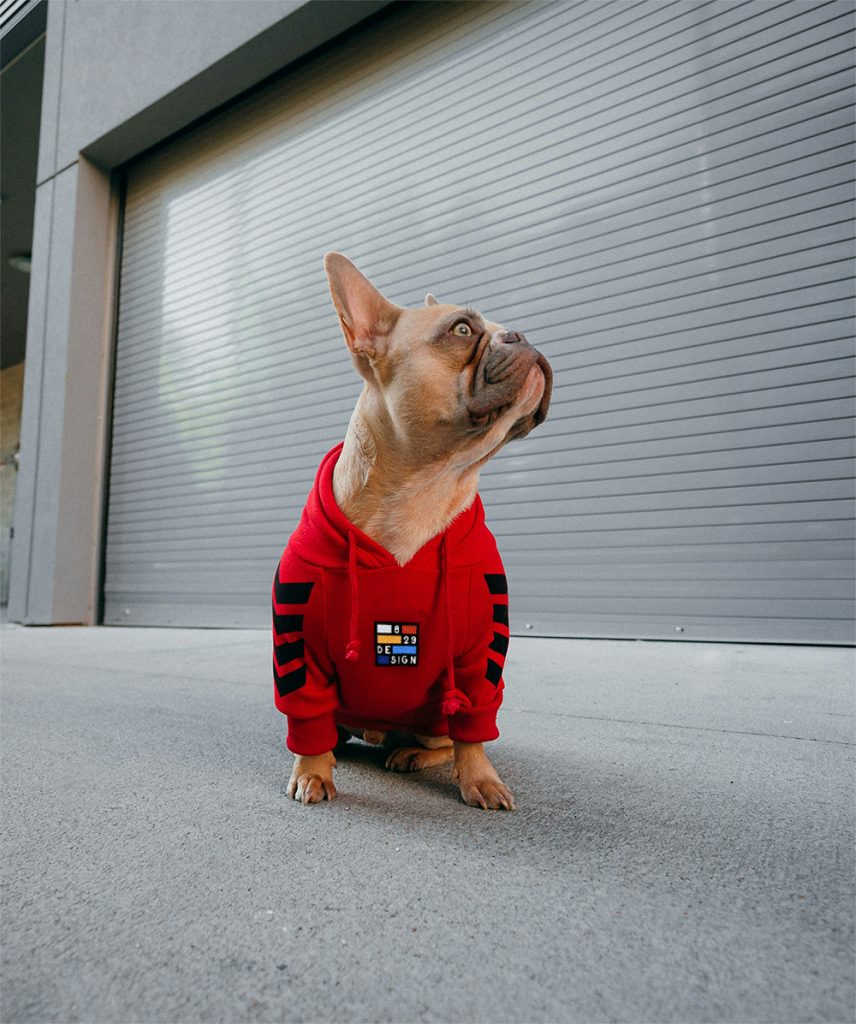
Here, we thrive on thinking and designing outside the box. Think of business cards for example—imagine handing out a sleek, sturdy metal card that not only looks impressive but also feels substantial—it’s like presenting a piece of your brand’s soul.
Ready to elevate your swag game and make your brand the MVP? We’re excited to chat about your brand and how we can bring your vision to life. Reach out to us to create custom merch that doesn’t just grab attention but also sparks conversations.
Let’s make your brand unforgettable.
Transform your brand’s swag into an MVP (Most Valuable Promo) today!
The World Of Curated Branding

Have You Thought About a Curated Brand?
We have discussed branding quite a bit on our journal because it is the major touchpoint through which customers find you and keep finding you. It is your calling card in the business world. Many in the industry have been wondering where the logo will be going next. We might be looking at the beginning wave.
This week, we are bringing up a new angle on the traditional logo that might seem a bit far-fetched or intimidating, but it might just be genius.

What is a Curated Brand?
Have you noticed a few brands standing out lately? The age of consistent branding might be coming to a close. What will come next, you might ask? As Rory Macrae put it so well in his article: The age of the “Chameleon Brand” (loving this term!!).
In an age where everyone has their own customized desktop, cell phone, menu, and more, why should a brand appear the same to every eye? This is based on the same thinking that brings you the “share a Coke” campaign. Visually, the bottles are still very consistent with each other and the Coke brand, but each bottle is personalized in a very specific way.
Google fiddles with this idea with their doodles all the time – more specifically, every time your birthday rolls around and your google landing page is decorated specifically for you. A company that has been doing this for much longer is M&M. You have been able to get personalized M&M candies made for years! Same old recognizable chocolates but with your message stamped onto them.
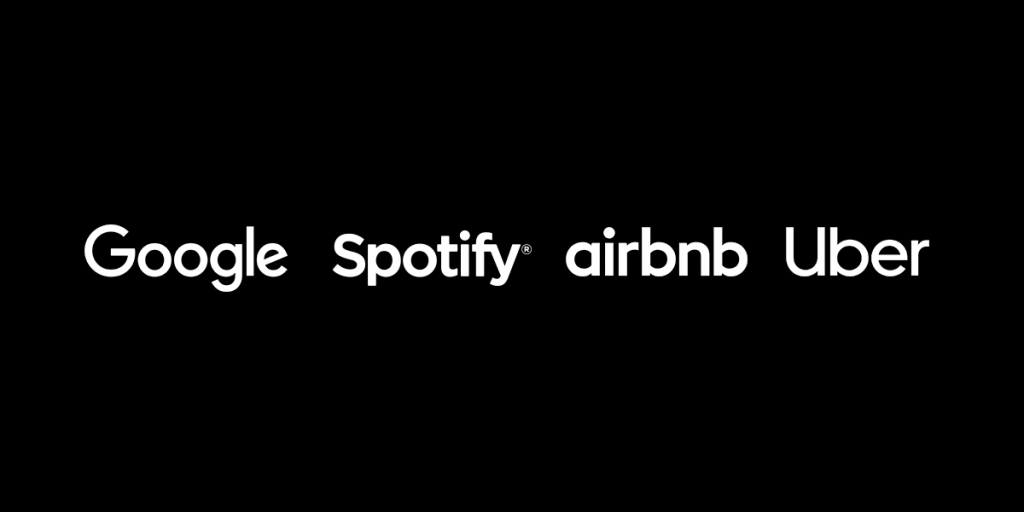
Market Saturation
The market has become saturated with the same looks and feels. Not only that – we see giants everywhere, recognizable from a three-key jingle or a color. And they’ve caught on to it. So why do they need to plaster their logo across everything when its not needed?
We are gradually stepping away from the traditional logo and branding, approaching the idea that you can morph into whatever your customer wants to see. Spooky, huh? One example of this is Netflix and their specialized content. They figure out what you love and select cover art for all the other titles to be most attractive to you. They figure this out in sneaky ways.
Morphing Potential
What we are asking is: What if you could do that with your brand? How lethal would you be in your market? This might still be a few years out, but it is definitely worth talking about. What kind of morphing would your brand be able to cope with? It might be worth taking the time to make sure you have a “morphing potential” in your base brand. If there’s nowhere to go with it, it will not go far.

While we all fear change just a little bit…it is something that your business depends on. Your brand needs to be able to grow and change right along with your customers.
If you don’t have a chameleon brand, you might need to make some serious decisions. Here are some questions to help you figure out if your brand is flexible and dare I say…chameleon-y?
- Do I currently have a strong branding system to utilize?
(colors, typography, graphic style, mood, visual iconography, sound/music) - Is my brand translating well across all platforms, media and devices?
- Does my current logo remain strong when simplified?
Spread Your Wings, Darling!
Let’s give you some morphing power!
Just as a chameleon effortlessly adapts to its surroundings, your brand can seamlessly transform to meet every need with vibrant versatility. Whether you seek professional advice or wish to refresh your brand, you’ve found the perfect place to embark on a new journey. Start your transformation today!
Email us: hello@829design.com or call (916) 581-1777
The Dangers Of Sameness


We found an interesting article and wanted to share it with you, but we also wanted to translate it a bit and add our thoughts!
In a piece written by Tom Roach, he discusses the difference between distinctiveness and differentiation. While these two words might sound like the same exact thing, he discusses them as two separate schools of thought as it applies to marketing and branding.
Here is a link to the article if you’d like to read it yourself!
Breaking The Mold
The whole idea of this article was to bring to light the fact that we are all trying to run successful businesses. In order to do that, we sometimes take the mold that we found was successful for one business then we change it just slightly to fit us and make us “stand out” a bit (while still being safely inside that mold). This doesn’t work too well though because you aren’t being distinctively different. You are still one of the masses that are trying to sell toner or blenders or whatever else. There is a definite risk to stepping out of the mold, but the risk for those who remain one of the masses is greater.
As a business, you cannot risk NOT standing out. As Mr. Roach says in his article, “The idea of competitive advantage is intrinsically linked to difference. Which is why the marketing sections of business books always say the same thing – difference matters – and no marketing professors ever advocate sameness as a winning strategy.” (1)

$$$ Through Difference
Brands are more successful when they set themselves apart. They might even get a better price for a product that is only slightly different than their competitors. Why is that? Because they look different therefore they MUST BE different. Worth the higher price tag, obviously. “An analysis of actual prices paid (from the loyalty card data of 2400 shoppers for 79 brands) showed that shoppers paid 22% more for brands they find different and meaningful vs those they didn’t, with difference alone accounting for 40% of this on average.” (2, Brown Study).
How does one set their brand apart and make themselves seem more…more? Good question. I liked the way Tom Roach put it in his article. It’s not just a single smoking gun, it’s a culmination of several different things. It’s a catchy tagline, a certain ad campaign, or even a branding strategy that isn’t at all what one would expect in your line of business.

Not only does being different help you stand out in people’s minds, but it also helps predict sales in the future. “Brands which people score strongly for both meaning and difference grow sales around 8.2% better in the following year than brands which score poorly, with difference being responsible for at least 50% of the predictive power.” (3) This means that if you are different enough and have legitimate meaning behind what you’re doing and what your brand represents, you have a higher chance of being successful!
So, What Are We Saying?
- Always shoot for unsaturated markets.
- Break that mold and make a definite move towards individuality.
- Keep looking for ways to be different and show you are different through public face, public interaction, or a number of different ways.
If you are having troubles finding your way or you’re not sure how to start, begin by asking questions. Reach out to businesses that inspire you and ask what their secret is. Shoot your local experts an email by clicking HERE!
Definitely take a fine tooth comb to your business. Compare the visuals and websites to your level one and level two competitors. From there you can start deviating from the mold.

It’s time to stand out!
Worried about your company in a saturated marketplace?
We can help!
Branding 101

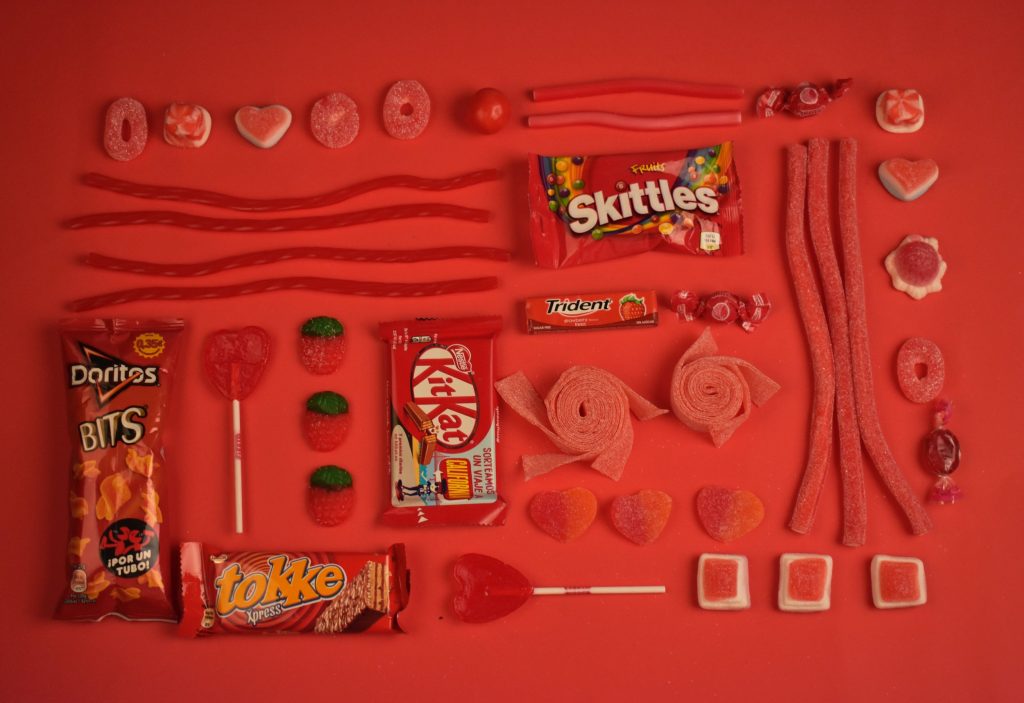
Branding 101: Brand vs. Company
While often intertwined, a brand is distinctly different from a company. Think of a company as the engine and a brand as the sleek, polished car that catches everyone’s attention. The company is the entity—the people, processes, and operations. The brand, on the other hand, is the carefully crafted identity that represents the company’s products or services to the public.
Consider this: a parent company like Procter & Gamble owns a wide array of branded products, or a company like FedEx offers multiple branded services. A company has CEOs and accountants; a brand has a color palette, a voice, and a photography style. While the actions of the company drive the brand, a strong brand is essential for building trust, growing a business, and connecting with customers. Success lies in creating a brand that authentically reflects your company’s mission and values.
Why a Brand Matters
A strong brand is the cornerstone of business growth. It builds loyalty, recognition, and emotional connections with your audience. The experiences people have with your brand and the stories they hear about it will influence their buying decisions. When your brand is recognizable and consistent, it elicits trust and encourages repeat business.
Imagine you’re in a grocery store choosing between two beverages: Coca-Cola or an unmarked soda. Which would you choose? Chances are, you’ll grab the Coca-Cola, not because it’s the only option, but because its branding has earned your trust over time.
Good Branding vs. Poor Branding
Good branding is an investment. It’s backed by research, strategy, and creativity. Expert designers and branding firms analyze market trends, study competitors, and dive deep into your ideal customer’s profile. The result? A cohesive brand system tailored to set you apart in a crowded marketplace.
On the other hand, poor branding—such as cheap, generic logos or inconsistent visuals—can harm your credibility. In some cases, bad design is worse than no design at all. A thoughtfully crafted brand identity communicates your company’s mission and sets expectations for the quality of your products or services. Consider Apple: its brand has evolved minimally over the years, maintaining a reputation for innovation, premium quality, and exceptional customer experience. That consistency keeps customers coming back, even at a premium price.
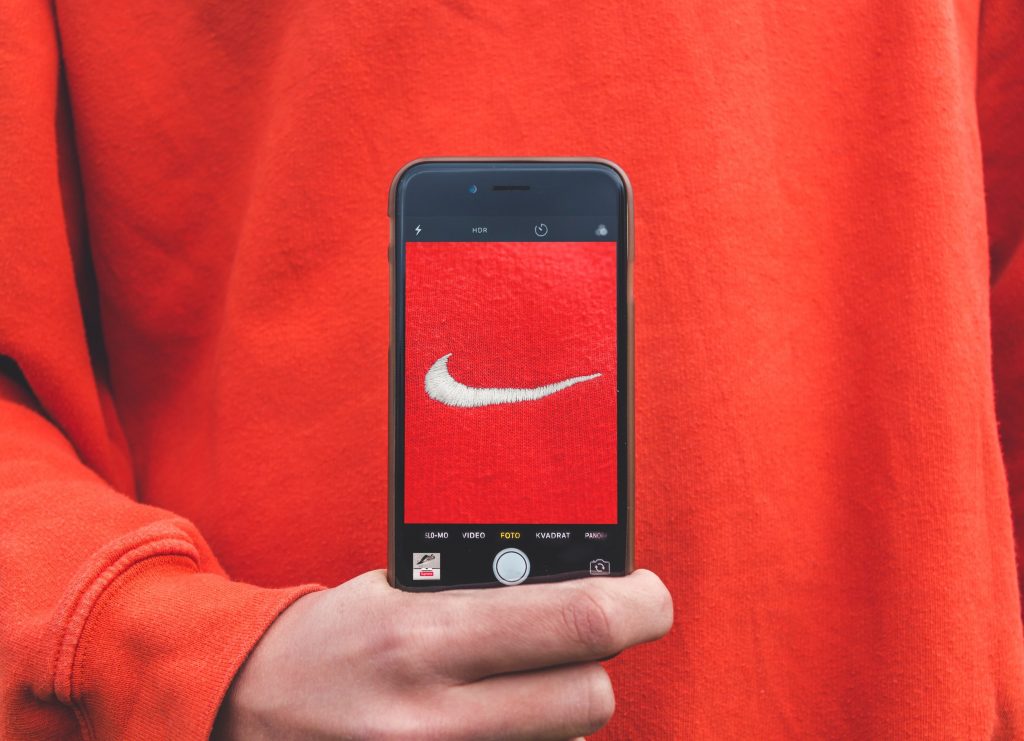
The Building Blocks of Branding
Did you know that maintaining a consistent look makes your brand four times more visible in the marketplace? Consistency is key, and it starts with understanding the components of a strong brand.
The logo is just the beginning. A professional brand identity includes a complete suite of elements: secondary logos, color palettes, typography, and usage guidelines. For example, Chipotle’s branding extends to every detail, from their napkins to their packaging. The consistent use of fonts, colors, and artwork ensures you instantly recognize their brand—even without seeing the logo.
Your brand extends to signage, packaging, promotional materials, and your website. A DIY website might look polished, but it often lacks the essence of your brand. Professional websites, by contrast, incorporate your unique fonts, colors, photography, and graphics to create a cohesive online presence that resonates with your audience.
To maintain consistency, designers create brand guidelines, often called a brand book. This document outlines everything from your logo’s usage to the precise color codes and typography for your materials. According to DesignRush, consistent branding can increase recognition by 80%. In short, a brand book isn’t just a luxury—it’s a necessity.
Standing Out in a Saturated Market
For new businesses, breaking through a crowded market can be challenging.
The key? Focus. Define your niche and tailor your message to your ideal audience. Avoid the temptation to appeal to everyone. Instead, share your unique story and highlight your values. According to industry research, narrowing your focus can boost revenue by 23% and foster loyalty with minimal effort.
Remember:
Your brand is more than a logo. It’s the promise you make to your customers. Investing in professional branding is an investment in the future of your business.
Ready to Strengthen Your Brand?
We’re here to help. Contact us at hello@829design.com or (916) 581-1777.